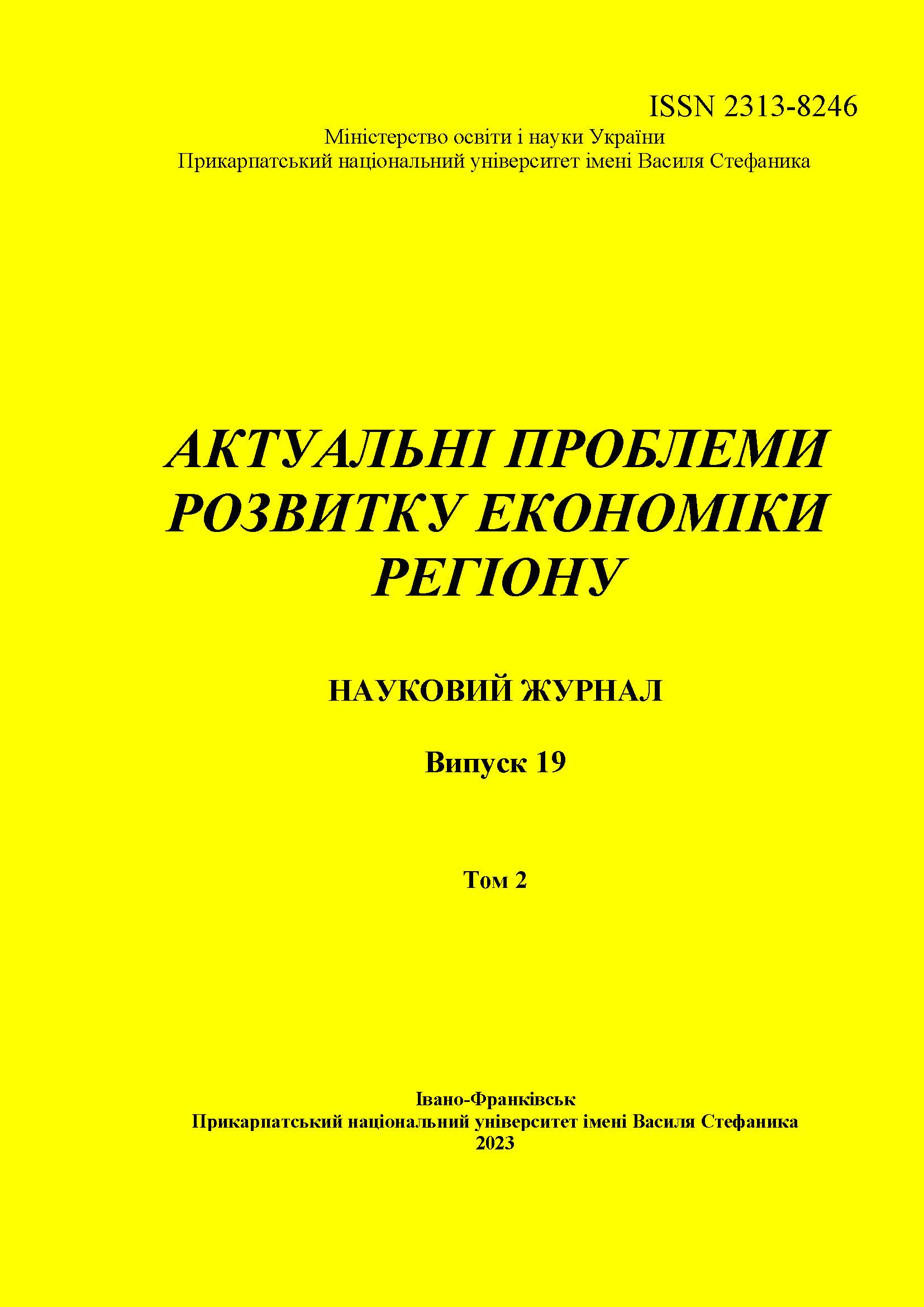IT SECTOR OF UKRAINE IN STRATEGIES TO IMPROVE THE COMPETITIVENESS OF THE NATIONAL ECONOMY
DOI:
https://doi.org/10.15330/apred.2.19.206-214Keywords:
IT cluster, competitiveness, national economy, digital transformation, digitalization, innovation, technological development, globalization, entrepreneurshipAbstract
The formation and development of the IT sector in Ukraine is an important component of the strategy to increase the competitiveness of the national economy in the face of global challenges. Approaches to the concept of digitalization and digital transformation, as well as the main consequences of digitalization on the national economy, are highlighted.
The purpose of the article is to reveal the role of the IT sector in increasing the competitiveness of the national economy in the context of global trends in digital transformation. The article used the methods of analysis and synthesis, elements of the institutional approach, comparative analysis based on data from national and international statistical services, international ratings.
It has been identified that the development of the IT sector in the context of the deployment of Industry 4.0 is an important factor in increasing international competitiveness in the context of intensifying competition in the world markets of goods and services. This is due to its impact on economic growth, innovation, employment and exports, the general positive macroeconomic effect on all spheres and sectors of the national economy.
It was revealed that the development of the IT sphere requires certain organizational and institutional conditions for functioning, in particular through the formation of IT clusters. It is justified that it is important to take into account the specifics of each country, including the level of economic development, scientific and technical potential, regulatory environment and other factors.
The analysis of the latest global trends in the development of IT clusters proved that the leaders in this field are mostly economically developed countries. A complex of endogenous and exogenous factors for the successful development of IT clusters has been identified, in particular, the availability of highly qualified personnel, business access to financing, the presence of a favorable ecosystem, cooperation between business, government and research institutions. It was found that Ukraine has the potential to develop IT clusters, which can contribute to increasing its competitiveness in the global dimension. Based on the analysis of foreign trade statistics, it has been proven that the IT sector has become the industry that has ensured the stable availability of foreign exchange resources from the export of services even in war conditions. The theoretical significance of the study lies in the development of methodological provisions on the need and possibility of transforming the concept of economic growth for open economies: from a focus on natural resources and cheap labor to an innovation-oriented economy. The practical value is due to the determination of the combinatorial influence of factors of both endogenous and exogenous origin to ensure the modernization of regulatory policy for the IT sector in Ukraine.
References
2. Hrushevska, V.V., and O.E.Epifanova. “Modeling and assessment of innovative development based on the country's competitiveness index. “Economics of industry, no. 1 (77), 2017, рр. 5-16.
3. Novytska, Yu., and M. Serzhanova. “The role of IT clusters in the development of the digital economy of Ukraine.” International Journal of Innovation, Management and Technology, vol. 12, no. 2, 2020, рр. 80-86.
4. “External sector statistics.” National Bank of Ukraine, bank.gov.ua/ua/statistic/sector-external#1 Accessed 12 April 2023.
5. Technology and Innovation Report. 2023. URL: https://unctad.org/system/files/official-document/tir2022_en.pdf Accessed 12 April 2023.
6. “Information technology (IT) spending forecast worldwide from 2012 to 2023.” Statista, www.statista.com/statistics/268938/global-it-spending-by-segment/#statisticContainer Accessed 12 April 2023.
7. “Leading information technology (IT) companies worldwide in 2022.” Statista, www.statista.com/statistics/479308/it-services-provider-revenue-ranking/ Accessed 12 April 2023.
8. “IT Research Resilience.” itcluster.lviv, itcluster.lviv.ua/projects/it-research/ Accessed 12 April 2023.
9. “Global Innovation Index 2022.” World Intellectual Property Organization, www.wipo.int/edocs/pubdocs/en/wipo-pub-2000-2022-en-main-report-global-innovation-index-2022-15th-edition.pdf Accessed 12 April 2023.
10. Melnyk, A.V., and I.V.Stetsko. “Development of the IT cluster in Ukraine: potential, trends, challenges.” Economy, management and administration, no. 4(87), 2019, рp. 57-63.
11. Mykhaylenko, D., and O. Maksimova. “Innovative ecosystem in Ukraine: an example of IT clusters”. Advances in Design, Simulation and Manufacturing IV, 2019, рp. 359-370.
12. Cherkashyn, V. “Preserve and protect the IT success of Ukraine.” epravda, www.epravda.com.ua/columns/2022/12/14/694961/ Accessed 12 April 2023.
13. “Services trade by broad economic categories.” ec.europa, ec.europa.eu/eurostat/databrowser/view/EXT_SER_BEC01/default/table?lang=en Accessed 12 April 2023.
Downloads
Published
How to Cite
Issue
Section
License
- Authors retain copyright and grant the journal right of first publication with the work simultaneously licensed under a Creative Commons Attribution NonCommercial NoDerivs 4.0 Unported License that allows others to share the work with an acknowledgement of the work's authorship and initial publication in this journal.
- Authors are able to enter into separate, additional contractual arrangements for the non-exclusive distribution of the journal's published version of the work (e.g., post it to an institutional repository or publish it in a book), with an acknowledgement of its initial publication in this journal.
- Authors are permitted and encouraged to post their work online (e.g., in institutional repositories or on their website) prior to and during the submission process, as it can lead to productive exchanges, as well as earlier and greater citation of published work (See The Effect of Open Access)


